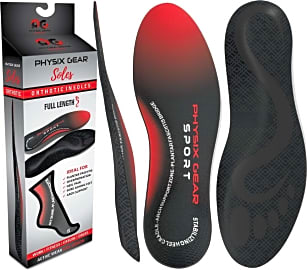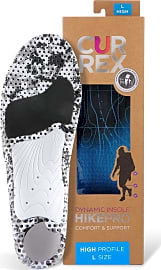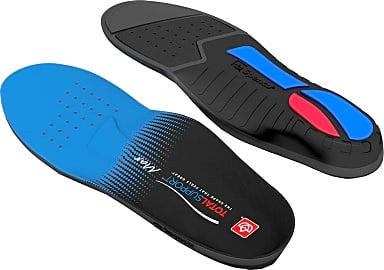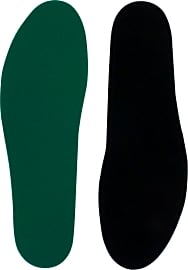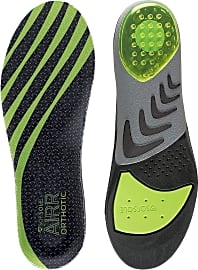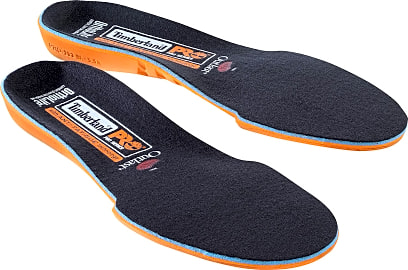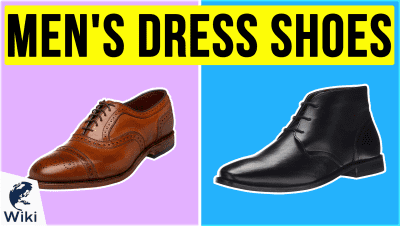The 10 Best Insoles

This wiki has been updated 42 times since it was first published in April of 2015. If you suffer from heel, back, or knee pain, every pair of shoes you own may seem more like torture devices than stylish footwear. That's one problem that can be easily solved, though, as these insoles offer incredible support and cushioning, helping to ease the strain on your barking dogs. Some even work to control odor, thereby ensuring your feet don't hurt anyone else, either. When users buy our independently chosen editorial picks, we may earn commissions to help fund the Wiki.
Editor's Notes
October 30, 2020:
Manufacturers of insoles make many lofty claims about their products relieving back or knee pain, helping to correct overpronation, promoting a natural gait, and more. And while some of these claims may or may not be true, one thing is certain, insoles do offer some additional cushioning to your feet that many users find makes standing or walking for long periods of time more comfortable. We recommend that if you have a particular medical condition that you are looking to mitigate, you check with your doctor first before purchasing any insoles. For everyone else, who are just looking for some extra padding to make activities less stressful for their joints and perhaps add a bit of extra support to their heels and arches, you can find what you need on this list.
For sport use, the Spenco Total Support Max immediately stand out as a top choice. They offer very rigid support and a high level of motion control, which should keep your foot in proper alignment, even when making sudden stops and turns. The 10 Seconds 3810 Ultra are also good for high activity levels, with their deep stabilizing heel cups and biostatic antimicrobial top that helps prevent the build up of odors and moisture.
As their name implies, the Currex HikePro are purpose made insoles perfectly suited to the activity in their name. They come in high-, medium-, and low-profile options to suit every arch type, and are designed to make your gait more efficient, which might give you a little more energy on those extra long treks. The fact that they are eco-friendly and crafted from a recycled material is just an added bonus.
We appreciate the versatility of the Powerstep Pinnacle, which fit in most shoes types from athletic to dress, and are suited to everything from jogging to static standing all day during work. While they may not be as efficient as dedicated options, they are a good multi-purpose choice that can serve most wearers well as they go about their day.
June 19, 2019:
Much like when discussing mattresses, pillows, and the like, the "best" insole can be an incredibly user-specific choice, as different people favor different ways of providing comfort. Some of the models listed here, such as the Dr. Scholl's Massaging Gel, are extremely soft and cushy, as they're designed to provide your foot with a soft surface to land on with every step. However, many people prefer firmer support, especially around the arches, and for them something like the Superfeet Carbon would be a better choice.
The amount of cushioning also creates another issue: the more your insoles provide, the less room you'll have inside your shoes. Some of the thicker models will require you to remove the existing insole from your footwear, which may or may not damage them. You can potentially avoid this by using a thin option like the Spenco Rx Comfort, which can actually be paired with another pair of orthotics as well. The downside to thin models is they're more likely to move around while you walk, so trimming them accurately and lacing up your shoes tightly is essential.
You should also be aware that many insole manufacturers will make claims like their product can help relieve back and knee pain. This can potentially be true — but only if that pain is caused by problems with your gait or foot structure, and then only if you choose an insole specifically designed to target those issues. If you're hoping for something more specific than simply having your feet feel better at the end of the day, we'd recommend discussing your options with a podiatrist or other medical professional to ensure you find a proper solution.
Special Honors
UpStep Custom You can get custom-tailored insoles without a referral to a podiatrist's office, as this company sends you an impression kit, then uses that data to create a pair designed specifically to your needs. They even take into consideration factors like medical diagnoses, your activity level, and the demands of any sports you play. upstep.com
Active Arch This company makes a wide range of orthotics custom-molded to your foot structure. They have specialized offerings for a wide range of activities, including Crossfit, golfing, and basic everyday wear, so you can stay comfortable regardless of what you have planned for your day. activearch.com
Brief History Of Foot Orthotics
Over the next two decades, shoe manufacturers started producing corrective shoes, which had built-in orthotic features.
The first use of medical arch support orthotics was in 1865, when Everett H. Dunbar added leather lifts between the outsole and the insole of a pair of shoes. Forty years later in 1905, an orthopedist in Boston by the name of Royal Whitman created the first full foot orthotic. It was called the Whitman Brace and was designed to treat a condition known as flat foot. Unfortunately, the Whitman Brace could be quite cumbersome to put on. It was also large enough to distort the wearer's shoe.
In 1904, a young physician by the name of Dr. William Scholl patented the Foot-Eazer and in 1907 he founded the Scholl Manufacturing Co. Inc. to produce and sell it. It was significantly lighter and smaller than the Whitman Brace, plus its arch support was more flexible and comfortable to wear. This allowed it to quickly replace the Whitman Brace as the foot orthotic of choice and by 1915, it was an international success with stores opening in London.
Over the next two decades, shoe manufacturers started producing corrective shoes, which had built-in orthotic features. These became wildly popular and at one point, there were over 1,000 brands of orthotic footwear. The advertisements for these orthotic shoes claimed the ability to prevent, cure, and relieve such a wide range of foot disorders that, in the late 1940s, the Federal Trade Commission issued a cease-and-desist order to any company that could not support their claims.
A few notable companies were able to withstand the rapid decline of the corrective shoe industry after the cease-and-desist order, Dr. Scholl's being one of them, and in the 1960s and 1970s new materials along with an increase in athletic shoes and the burgeoning popularity of jogging gave the orthotics industry renewed vigor.
Benefits Of Using Insoles
The benefits of using insoles can be quickly realized by anybody who stands or walks for long periods of time throughout the day. They can also be beneficial for runners. Not only do they lessen foot fatigue and relieve joint pain in the ankle and knee, insoles are known to help with plantar fasciitis and abnormal foot pronation.
These artificial surfaces do not offer any of the cushioning and shock absorbing properties of the natural landscape.
As we have molded our landscape to form cities with well-laid out sidewalks and roads and construct buildings with tile and marble floors, we have increased the amount of time we spend walking on unnaturally hard surfaces and reduced the amount of time spent on natural land like grass, sand, and soil. These artificial surfaces do not offer any of the cushioning and shock absorbing properties of the natural landscape. This has resulted in an estimated 50% to 60% of the population experiencing foot, ankle, and lower joint pain in some form or another.
The shock and impact absorbing properties of insoles works to combat this problem. They are designed to mold to your foot, offering more support and more cushioning. One could argue that shoes already come with enough padding, and this is often true when they are new. After walking in them for six months to a year, this padding gets compacted and loses much of its ability to effectively absorb impacts. Inserting a set of insoles into a pair of shoes is considerably cheaper than buying a new pair when the shoe's padding loses its shock absorbing properties.
Understanding The Types Of Insoles
Insoles come in a variety of types, each designed with a different application in mind. They will often be advertised with the following terms: arch support, arch cushion, comfort or cushion, athletic or sport, and gel.
Arch support insoles are somewhat hard and rigid. This is because they are designed to give support more so than add comfort. They assist the foot in attaining a natural stepping position and help to properly spread the body's weight across the entire foot. Arch supports may feel uncomfortable when one first starts using them, but most become accustomed to them within a week or two.
Arch supports may feel uncomfortable when one first starts using them, but most become accustomed to them within a week or two.
Arch cushions are ideal for the person who has only a slight arch problem and wants something to enhance comfort while offering support at the same time. They can also be used by someone who is having trouble becoming accustomed to the more rigid design of arch support insoles. Arch cushions have a foam padding to help absorb impacts.
Comfort insoles are designed for people who experience discomfort when standing and walking for long periods. They have thicker padding then other insole types and will work better for absorbing heavy impacts. Comfort insoles are ideal for walking all day and can help increase circulation or relieve joint pain and foot fatigue.
Athletic insoles are engineered to meet the rigorous demands of athletes. They will have more heel padding and a support system designed to promote a natural gait. Sport insoles tend to be more compact than other types of insoles so they can fit into tight running shoes.
Gel insoles offer the most shock absorption and provide one of the softest feeling steps. They mold better to the shape of the foot and can bend with the shoe if you step on uneven surfaces. Gel insoles also last longer before losing their shock absorbing abilities than traditional padding.


